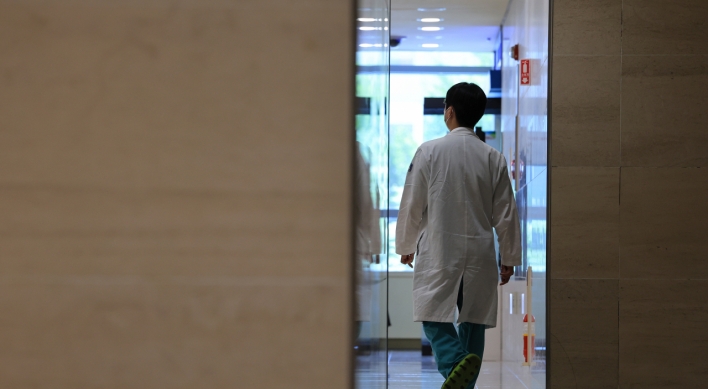NEW YORK (AP) -- U.S. stock futures rose Tuesday, but only after swinging wildly in overnight trading following the worst day for stocks since 2008.
The Federal Reserve plans to meet Tuesday on interest-rate policy. The central bank already has kept its key interest rate at a record low of nearly zero since 2008. It has also pledged to keep rates low ``for an extended period.''
European strategists said speculation about more stimulus coming from the U.S. helped their markets recover from steep losses earlier Tuesday.
The Fed in June completed a $600 billion program to buy Treasury bonds in support of the economy. Some Fed officials oppose another round of so-called ``quantitative easing'' because it could lead to higher inflation.
Dow Jones industrial average futures were down more than 200 points early Tuesday, following Asian markets lower. The Hang Seng index in Hong Kong fell 5.7 percent after China's inflation rose to a 37-month high in July. The drops in Asian markets continued a rout in global stocks following a 634.76 point plunge for the Dow on Monday.
But Dow futures rallied through the early morning and at one point were up more than 300 points. They then see-sawed back and forth.
An hour ahead of the New York opening, the Dow futures were up 102 points, or 1 percent, at 10,828.
S&P 500 index futures rose 12.50, or 1.1 percent, to 1,123.80. Nasdaq 100 futures rose 25.25, or 1.2 percent, to 2,063.25.
Futures don't always accurately predict how stocks will move at the opening of trading.
Goldman Sachs economists said in a report Monday that the Fed could buy more Treasurys or find another way to stimulate the economy if it does fall into another recession, but ``we don't expect it anytime soon.'' They see the odds of a recession at one in three.
Economists have been upping the probability of a recession since learning two weeks ago that the economy grew much more slowly in the first half of 2011 than previously thought. The economy grew at just a 0.4 percent annual rate in the first quarter and 1.3 percent in the second quarter. The first half of 2011 was the slowest since the end of the recession.
A government report Tuesday also showed that U.S. worker productivity fell 0.3 percent in the spring. It was the second straight quarter that workers were less productive, though economists had expected a steeper drop.
The weaker productivity follows other gloomy reports in the last two weeks, such as ones showing that the manufacturing and services industries barely grew in July.
Worries are also rising about debt problems in Europe and higher inflation in China, Brazil and other developing countries. The fears have sent investors toward investments traditionally seen as safer, such as gold.
Gold set another record and rose $42 to $1,755 per ounce. It started the year at $1,421.40.
Investors piled into Treasurys on Monday, sending the yield on the 10-year note down to 2.34 percent. That matched its lowest level for the year, reached last week. Treasurys gave back some of those gains on Tuesday, ``as they shake off some of the froth,'' RBS Securities analysts wrote in a report. The 10-year yield rose to 2.38 percent.
The Vix index, a measure of fear among investors, jumped 50 percent on Monday to its highest level since March 2009. The index shows how worried investors are that the S&P 500 will drop over the next 30 days. It does this by measuring prices for stock options that investors can buy to help protect their portfolios.
The worries about the global economy falling into a second recession have pulled attention away from stronger corporate earnings.
Dish Network Corp.'s second-quarter net income rose 30 percent to $334.8 million on stronger revenue. Internet company AOL Inc. reported a smaller net loss for its second quarter, helped in part by stronger advertising revenue.
The housing market, though, remains weak. Homebuilder Beazer Homes USA Inc. said its loss widened last quarter after it closed on fewer homes.
Among the 441 companies in the S&P 500 index that have already reported their second-quarter earnings, results are up 12 percent from a year ago.
- Korean art gets spotlight at Venice Biennale 2024
- Yoon's approval rating sinks to all-time low following election loss
- Police uncover illegal gambling website made by teens, for teens
- SK hynix chief underscores chip cooperation between Korea, US
- Climate impacts set to cut 2050 global GDP by nearly a fifth
- Seoul Business Agency CEO says SNS marketing essential for SME
- Samsung C&T president makes her first business trip to Milan
- Seoul shares spike nearly 2% on bargain hunting; won sharply up
- [Today’s K-pop] Zico drops snippet of collaboration with Jennie
- Trilateral talks acknowledge ‘serious’ slumps of won, yen









![[Kim Seong-kon] Democracy and the future of South Korea](http://res.heraldm.com/phpwas/restmb_idxmake.php?idx=644&simg=/content/image/2024/04/16/20240416050802_0.jpg&u=)








![[Today’s K-pop] Zico drops snippet of collaboration with Jennie](http://res.heraldm.com/phpwas/restmb_idxmake.php?idx=642&simg=/content/image/2024/04/18/20240418050702_0.jpg&u=)